The Forgotten Forest of Bothwell
Sunday, September 4th, 2011Whilst touring Tasmania’s highland country in 2009, we stopped over in the old rural town of Bothwell.
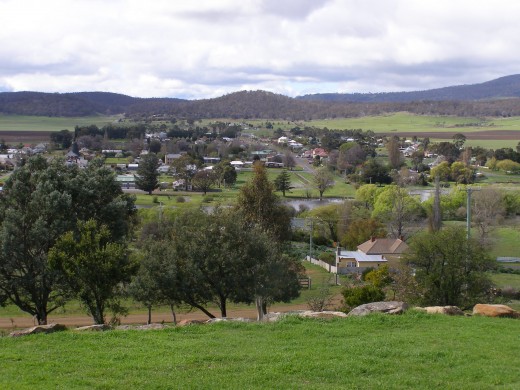 A pastoral Bothwell ~ an ode to the British countryside
A pastoral Bothwell ~ an ode to the British countrysidelooking from Barrack Hill over the River Clyde (Photo by Editor 2009, free in Public Domain) (click photo to enlarge, then again to enlarge again)
.
Bothwell is historically known for its colonial exploration dating back to 1806, its convict past dating back to the 1820’s, and for its soldiers’ barracks, and for its pastoral colonial heritage.
Its namesake was derived from a town in Lanarkshire, Scotland; likewise the naming of the River Clyde.
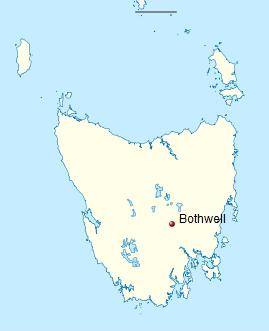 Bothwell
Situated in the Tasmanian South East Bioregion
Bothwell
Situated in the Tasmanian South East Bioregion
.
Few will know of the prior Tasmanian Aboriginal heritage of the 5 bands of the traditional Tasmanian tribe (kinship group) the ‘Teen Toomle Mennenyer‘ of this highland and river region. Many were either massacred, rounded up and put into missions, or succumbed to European diseases. Most were dispersed from their traditional lands by 1832. This otherwise labelled ‘Big River Tribe‘ likely due to the big river country characterising this fertile inland region; rivers of which subsequently named the Derwent, Ouse, Clyde, Shannon, Weld, Styx, Plenty, Jordan, Lake, Isis and Pine, amongst others.
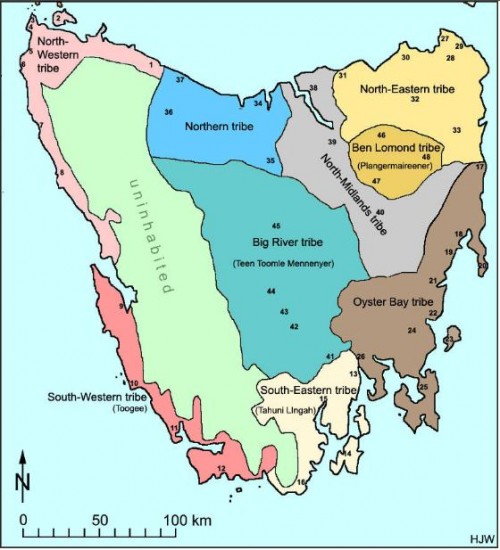 Traditional Aboriginal Territories of Tasmania
Traditional Aboriginal Territories of Tasmania
.
Even fewer will know of the extensive tall Tasmanian Swamp Gum forest that for thousands for years blanketed this lush river valley, prior to it being clear-felled for timber and to make way for colonial pasture.
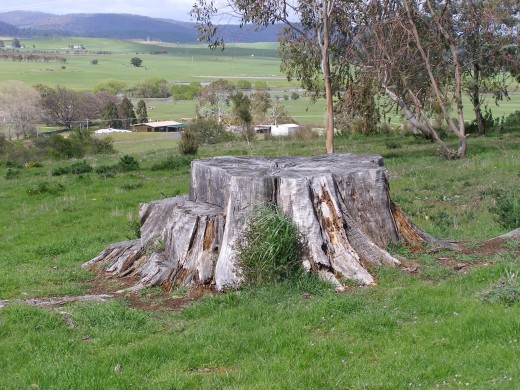 ‘Dead Heritage’
Stump of a Tasmanian Swamp Gum (Eucalyptus regnans)
on Barrack Hill, overlooking Bothwell
(Photo by Editor 2009, free in Public Domain
(click photo to enlarge, then again to enlarge again)
‘Dead Heritage’
Stump of a Tasmanian Swamp Gum (Eucalyptus regnans)
on Barrack Hill, overlooking Bothwell
(Photo by Editor 2009, free in Public Domain
(click photo to enlarge, then again to enlarge again)
.
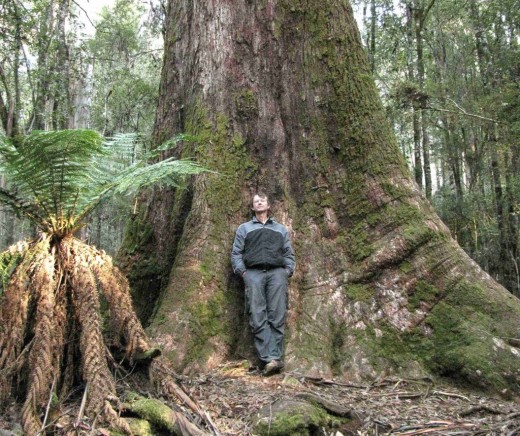 ‘Tasmanian Natural Heritage’
‘Tasmanian Natural Heritage’Tasmanian Swamp Gum The type of Swamp Gum forest around Bothwell that would have greeted the colonists back in the 1820s (© Photo Magi Nams) Source: http://www.nams.ca/MagiBlog/tag/tasmanian-snow-gum/page/2/
.
.
Fifty kilometres down the road from Bothwell on the tourist drive, lies the old colonial town of Oatlands. The old Callington Flour Mill in the town has become a tourist attraction and has recently been restored aided by a $1.2 million grant by Australia’s Minister for Trade, Simon Crean, in 2007.
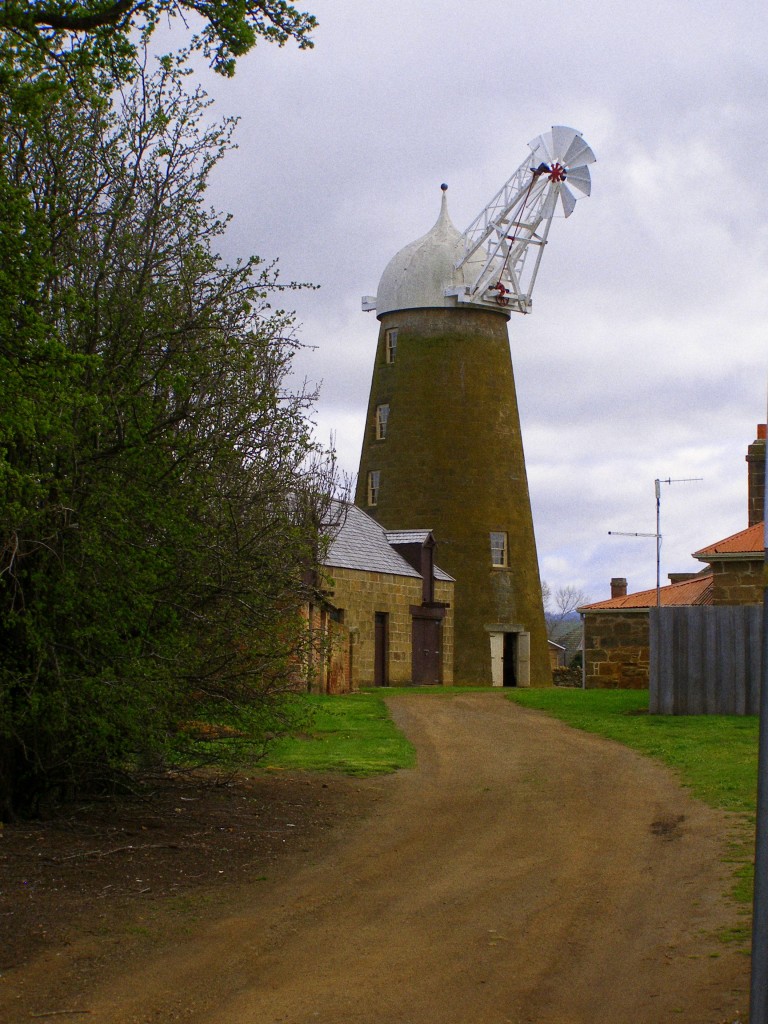 ‘Tasmanian Colonial Heritage’
Oatlands’ Wind Mill
The 1837 landmark Callington Flour Mill, recently restored
(Photo by editor, September 2009, free in Public Domain)
‘Tasmanian Colonial Heritage’
Oatlands’ Wind Mill
The 1837 landmark Callington Flour Mill, recently restored
(Photo by editor, September 2009, free in Public Domain)
.
Part of that restoration involved adding new structural posts in its interior. The following photo is of a rather new looking hardwood post inside the mill. It looks like local Messmate/Stringybark (Eucalyptus obliqua), generically marketed as ‘Tasmanian Oak‘.
.
Other local timbers sold as ‘Tasmanian Oak’ are Alpine Ash (Eucalyptus delegatensis) and Swamp Gum (Eucalyptus regnans).
On Mainland Australia, Eucalytus regnans is referred to as Mountain Ash ~ once the world’s tallest tree species, once taller than the Californian Redwood.
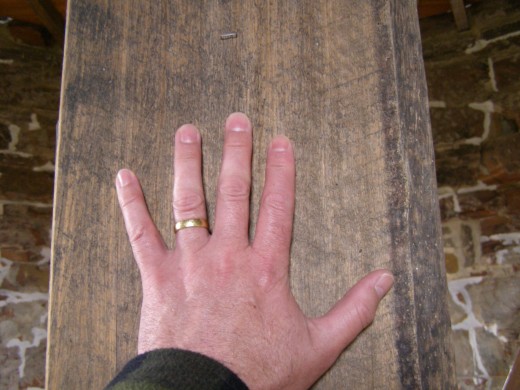 The environmental cost of Tasmanian Tourism
A new ten inch (wide) post inside Oatlands’ restored mill,
probably from local Messmate/Stringybark (Eucalyptus obliqua)
(Photo by editor, September 2009, free in Public Domain)
.
The environmental cost of Tasmanian Tourism
A new ten inch (wide) post inside Oatlands’ restored mill,
probably from local Messmate/Stringybark (Eucalyptus obliqua)
(Photo by editor, September 2009, free in Public Domain)
.
.
.
.
.
Further Reading:
.
[1] ‘The Traditional Tasmanians‘, ^http://www.andaman.org/BOOK/chapter52/5-Tasmania-traditional/traditional.htm [Read More]








